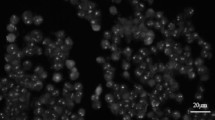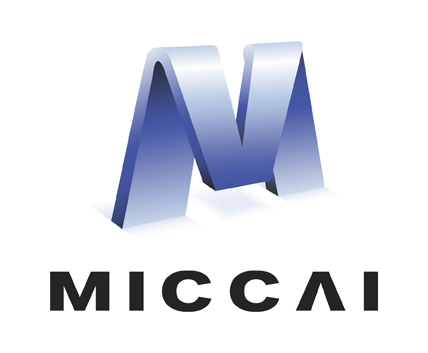Abstract
Detecting genetic aberrations is crucial in cancer diagnosis, typically through fluorescence in situ hybridization (FISH). However, existing FISH image classification methods face challenges due to signal variability, the need for costly manual annotations and fail to adequately address the intrinsic uncertainty. We introduce a novel approach that leverages synthetic images to eliminate the requirement for manual annotations and utilizes a joint contrastive and classification objective for training to account for inter-class variation effectively. We demonstrate the superior generalization capabilities and uncertainty calibration of our method, which is trained on synthetic data, by testing it on a manually annotated dataset of real-world FISH images. Our model offers superior calibration in terms of classification accuracy and uncertainty quantification with a classification accuracy of 96.7% among the 50% most certain cases. The presented end-to-end method reduces the demands on personnel and time and improves the diagnostic workflow due to its accuracy and adaptability. All code and data is publicly accessible at: https://github.com/SimonBon/FISHing.
Access this chapter
Tax calculation will be finalised at checkout
Purchases are for personal use only
Similar content being viewed by others
References
Algan, G., Ulusoy, I.: Image classification with deep learning in the presence of noisy labels: a survey. Knowl. Based Syst. 215, 106771 (2021)
Ambros, P.F., et al.: International consensus for neuroblastoma molecular diagnostics: report from the international neuroblastoma risk group (INRG) biology committee. Br. J. Cancer 100(9), 1471–1482 (2009)
Ardeshir, S., Azizan, N.: Uncertainty in contrastive learning: on the predictability of downstream performance (2022)
Bahry, E., et al.: RS-FISH: precise, interactive, fast, and scalable FISH spot detection. bioRxiv pp. 2021.03.09.434205 (2021)
Bouilhol, E., Lefevre, E., Dartigues, B., Brackin, R., Savulescu, A.F., Nikolski, M.: DeepSpot: a deep neural network for RNA spot enhancement in smfish microscopy images (2021)
Chen, T., Kornblith, S., Norouzi, M., Hinton, G.: A simple framework for contrastive learning of visual representations (2020)
Cohn, S.L., et al.: The international neuroblastoma risk group (INRG) classification system: An INRG task force report. J. Clin. Oncol. 27, 289–297 (1 2009)
Ding, Y., Liu, J., Xiong, J., Shi, Y.: Revisiting the evaluation of uncertainty estimation and its application to explore model complexity-uncertainty trade-off. In: IEEE Computer Society Conference on Computer Vision and Pattern Recognition Workshops 2020-June, pp. 22–31 (2019)
Eichenberger, B.T., Zhan, Y., Rempfler, M., Giorgetti, L., Chao, J.A.: DeepBlink: threshold-independent detection and localization of diffraction-limited spots. Nucleic Acids Res. 49, 7292–7297 (2021)
Gal, Y., Ghahramani, Z.: Dropout as a bayesian approximation: representing model uncertainty in deep learning (6 2015)
Gudla, P.R., Nakayama, K., Pegoraro, G., Misteli, T.: SpotLearn: convolutional neural network for detection of fluorescence in situ hybridization (FISH) signals in high-throughput imaging approaches. Cold Spring Harb. Symp. Quant. Biol. 82, 57–70 (2017)
Gutwein, S., Kampel, M., Sabine, T.M., Licandro, R.: Genuine: genomic and nucleus information embedding for single cell genetic alteration classification in microscopic images. In: Proceedings of the 13th International Conference on Pattern Recognition Applications and Methods (2024)
He, K., Zhang, X., Ren, S., Sun, J.: Deep residual learning for image recognition. In: Proceedings of the IEEE Computer Society Conference on Computer Vision and Pattern Recognition, 2016-December, pp. 770–778 (2015)
Imbert, A., Mueller, F., Walter, T.: PointFISH – learning point cloud representations for RNA localization patterns (2023)
Imbert, A., et al.: Fish-quant v2: a scalable and modular tool for smFISH image analysis. RNA 28, 786–795 (6 2022)
Kirchhof, M., Kasneci, E., Oh, S.J.: Probabilistic contrastive learning recovers the correct aleatoric uncertainty of ambiguous inputs (2023)
Lakshminarayanan, B., Pritzel, A., Blundell, C.: Simple and scalable predictive uncertainty estimation using deep ensembles (2016)
Lin, T.Y., Goyal, P., Girshick, R., He, K., Dollar, P.: Focal loss for dense object detection. IEEE Trans. Pattern Anal. Mach. Intell. 42, 318–327 (8 2017)
Linmans, J., van der Laak, J., Litjens, G.: Efficient out-of-distribution detection in digital pathology using multi-head convolutional neural networks (2020)
McInnes, L., Healy, J., Melville, J.: UMAP: uniform manifold approximation and projection for dimension reduction. arXiv:1802.03426 [cs, stat] (2020), comment: Reference implementation available at http://github.com/lmcinnes/umap
Mukhoti, J., Kirsch, A., Amersfoort, J.V., Torr, P.H.S., Gal, Y.: Deep deterministic uncertainty: a new simple baseline (2023)
Penault-Llorca, F., et al.: Emerging technologies for assessing HER2 amplification. Am. J. Clin. Pathol. 132, 539–548 (2009)
Seoni, S., Jahmunah, V., Salvi, M., Barua, P.D., Molinari, F., Acharya, U.R.: Application of uncertainty quantification to artificial intelligence in healthcare: a review of last decade (2013-2023). Comput. Biol. Med. 107441 (2023)
Sohn, K.: Improved deep metric learning with multi-class n-pair loss objective. Adv. Neural Inf. Process. Syst. 29 (2016)
Tang, Z., Wang, L., Tang, G., Medeiros, L.J.: Fluorescence in situ hybridization (FISH) for detecting anaplastic lymphoma kinase (ALK) rearrangement in lung cancer: Clinically relevant technical aspects. Int. j. mol. sci. 20(16), 3939 (2019)
Tinevez, J.Y., et al.: TrackMate: an open and extensible platform for single-particle tracking. Methods 115, 80–90 (2017)
Wei, H., Xie, R., Cheng, H., Feng, L., An, B., Li, Y.: Mitigating neural network overconfidence with logit normalization (2022)
Winkens, J., et al.: Contrastive training for improved out-of-distribution detection (2020)
Wollmann, T., Ritter, C., Dohrke, J.N., Lee, J.Y., Bartenschlager, R., Rohr, K.: DetNet: deep neural network for particle detection in fluorescence microscopy images. In: Proceedings - International Symposium on Biomedical Imaging 2019-April, pp. 517–520 (2019)
Wu, M., Goodman, N.: A simple framework for uncertainty in contrastive learning (2020)
Zakrzewski, F., et al.: Automated detection of the HER2 gene amplification status in fluorescence in situ hybridization images for the diagnostics of cancer tissues. Sci. Rep. 9(1), 8231 (2019)
Acknowledgments
This research was supported by Vienna Science and Technology Fund (WWTF) PREDICTOME [10.47379/LS20065], EU EUCAIM (No.101100633-EUCAIM) and the Austrian Science Fund (FWF) MAPMET [10.55776/P35841].
Author information
Authors and Affiliations
Corresponding author
Editor information
Editors and Affiliations
1 Electronic supplementary material
Below is the link to the electronic supplementary material.
Rights and permissions
Copyright information
© 2025 The Author(s), under exclusive license to Springer Nature Switzerland AG
About this paper
Cite this paper
Gutwein, S., Kampel, M., Taschner-Mandl, S., Licandro, R. (2025). FISHing in Uncertainty: Synthetic Contrastive Learning for Genetic Aberration Detection. In: Sudre, C.H., Mehta, R., Ouyang, C., Qin, C., Rakic, M., Wells, W.M. (eds) Uncertainty for Safe Utilization of Machine Learning in Medical Imaging. UNSURE 2024. Lecture Notes in Computer Science, vol 15167. Springer, Cham. https://doi.org/10.1007/978-3-031-73158-7_3
Download citation
DOI: https://doi.org/10.1007/978-3-031-73158-7_3
Published:
Publisher Name: Springer, Cham
Print ISBN: 978-3-031-73157-0
Online ISBN: 978-3-031-73158-7
eBook Packages: Computer ScienceComputer Science (R0)





